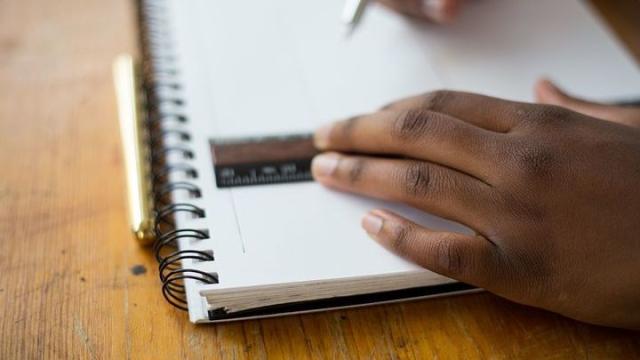That black school children are treated more harshly than white children by teachers is no secret, as plenty of studies and painful anecdotes have repeatedly shown. But some recent research published in the journal Contemporary Educational Psychology suggests an even more discouraging reality: The incoming generation of teachers shows bias against black kids, too.
Image: StockSnap (Pixabay)
Researchers at North Carolina State University and elsewhere recruited 40 university students (most of whom were white) who were training to become teachers.
They asked the volunteers to look at pictures of 20 black and white men and women, and then to identify one of five emotions the actors were showing (happiness, anger, surprise, sadness or fear). A previous experiment by the researchers used 20 human volunteers and facial recognition software to pinpoint the emotion shown in each photo.
For a separate test, the volunteers watched four videos depicting a black and white boy in primary school.
One pair of videos had the boys doing something that could be seen as callous, with the black boy stepping on someone’s homework with muddy shoes and the white boy walking away with someone else’s handheld video game.
The other two videos featured actions more likely to be seen as unintentionally insensitive: The black boy made a possibly rude comment about another student’s work, and the white boy put someone else’s work in the bin while cleaning up.
For all the videos, the volunteers were asked to rate how hostile the boy was on a scale from one to five.
In the photo task, the volunteers were consistently worse at guessing the emotions of both black men and women. Overall, black faces were more than twice as likely to be misread than white faces.
And when it came to anger, the misreading was even worse. Black faces were four times as likely to be mistakenly seen as angry.
With the video test, the volunteers similarly attributed more malice to black boys. On average, the hostility rating of black boys was 3.37, while the average rating of white boys was 2.25.
And even in the scenarios where the boy seemingly meant no harm, the average point difference in rating between white and black boys stayed the same.
“We really worked hard to make these visual stimuli all comparable to each other, so it’s really something that’s in the receiver that’s going on here,” lead author Amy Halberstadt, professor of psychology at North Carolina State, told Gizmodo. “This is highlighting very specific ways racial bias might be playing out.”
Though research has shown that black boys in particular are discriminated against in school, receiving higher rates of suspensions, expulsions and other disciplinary actions than everyone else (even when accounting for other factors such as poverty or grades), Halberstadt and her team note black girls have their own set of challenges.
“For instance, expectations for females to be more emotionally expressive than males coupled with stereotypes of black people being angry and aggressive make black girls likely targets for being labelled as ‘out of control’ or overly assertive in the classroom,” they wrote.
According to Halberstadt, the study’s findings are some of the first to empirically show that a similar bias for seeing anger exists toward black women as well as men.
But other qualitative research – relying on interviews and surveys of schoolchildren – has found black girls are more often singled out for not being “ladylike” compared to white girls.
These misperceptions have real consequences. White (but not black) teachers have been found to underestimate the academic talent and learning capability of black students, even as early as preschool.
And the less confident teachers are in their black students’ academic prospects, the less likely the students are to succeed, other research has shown.
Of course, these biases aren’t unique to teaching. Racial discrimination poisons every avenue of life in the US, from job-seeking to online dating to getting medical care.
“There are many things in our culture that are directing people to have these biases,” Halderstadt said, “so none of us are immune to them.”
As sobering as the findings are, Halderstadt believes these sort of studies can be the start of a larger conversation for prospective and current teachers to have about how they will interact with their students (along with everyone else).
“If we don’t even know that we’re doing this, then we can’t change. So the first step is to become aware and then we can work on our changes,” she said.
At the same time, simply knowing about our prejudices isn’t enough.
“The big picture is that teachers can know they have bias, but that’s a very broad statement,” Halberstadt added.
“What this suggests to me is that [one way to address bias] is through understanding emotion. Teachers may need to think about whether they’re understanding the emotions of black people as well as they are of white people.”
The study’s small sample size means that only limited conclusions can be drawn from the results. But Halberstadt and her team are already following up with larger studies examining teacher bias, as well as how it affects their students.
